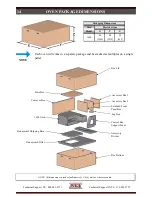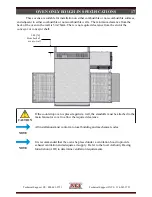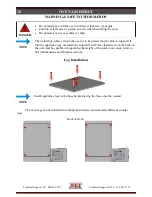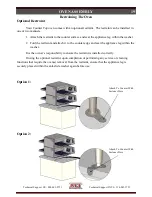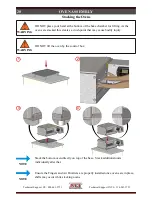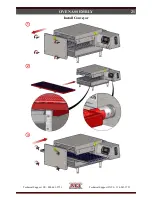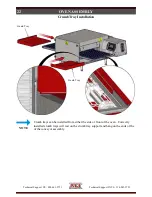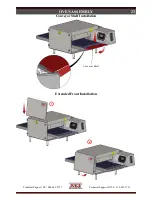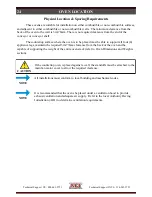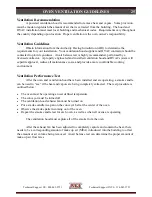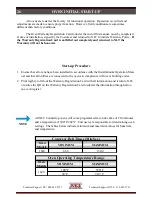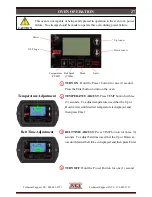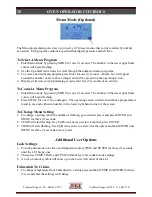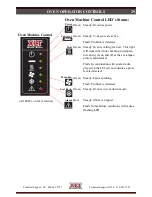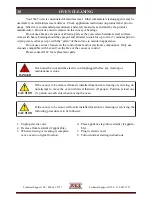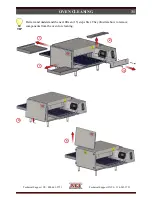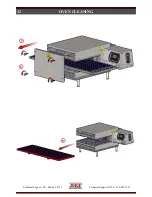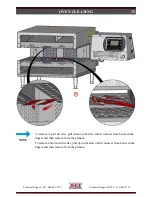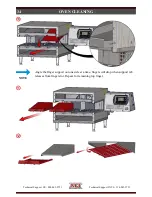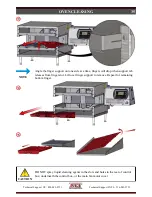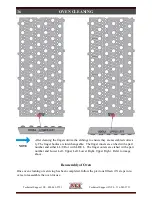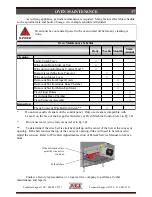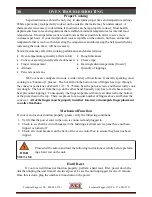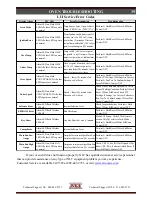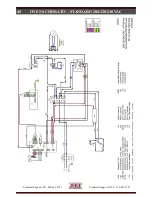
Technical Support US: 888-443-2751
Technical Support INTL: 316-943-2751
25
Ventilation Recommendation
A powered ventilation hood is recommended to remove heat and vapors. Some provision
must be made to replenish the amount of air that is extracted from the building. The hood and
HVAC installation must meet local building and mechanical codes. Requirements vary throughout
the country depending upon location. Proper ventilation is the oven owner’s responsibility.
Ventilation Performance Test
After the oven and ventilation hood have been installed and are operating, a smoke candle
can be used to “see” if the heat and vapors are being completely extracted. The test procedure is
outlined below:
The oven must be operating at user defined temperature
The conveyor must be turned off
The ventilation hood exhaust fan must be turned on
Put a smoke candle in a pan on the conveyor belt at the center of the oven
Observe the smoke pattern coming out of the oven
Repeat the smoke candle test for each oven, as well as when all ovens are operating
The ventilation hood must capture all of the smoke from the oven.
After the exhaust fan has been adjusted to completely capture and contain the heat, there
needs to be a corresponding amount of make up air (MUA) introduced into the building to offset
the amount of air volume being removed. An air balance test can determine the proper amount of
make-up air flow rates.
Ventilation Guidelines
Obtain information from the Authority Having Jurisdiction (AHJ) to determine the
requirements for your installation. Your ventilation hood supplier and HVAC contractor should be
contacted to provide guidance. An air balance test is highly recommended, performed by a
licensed contractor. A properly engineered and installed ventilation hood and HVAC system will
expedite approval, reduce all maintenance costs, and provide a more comfortable working
environment.
OVEN VENTILATION GUIDELINES




